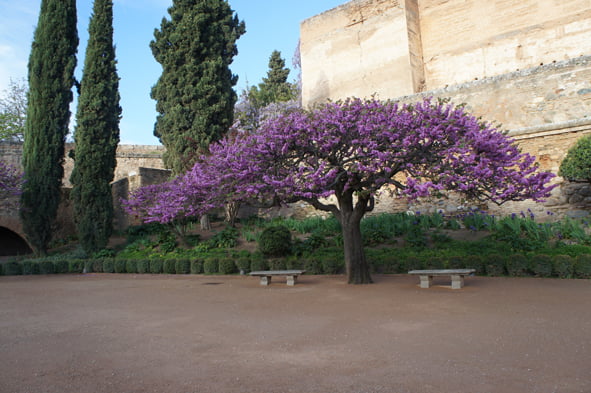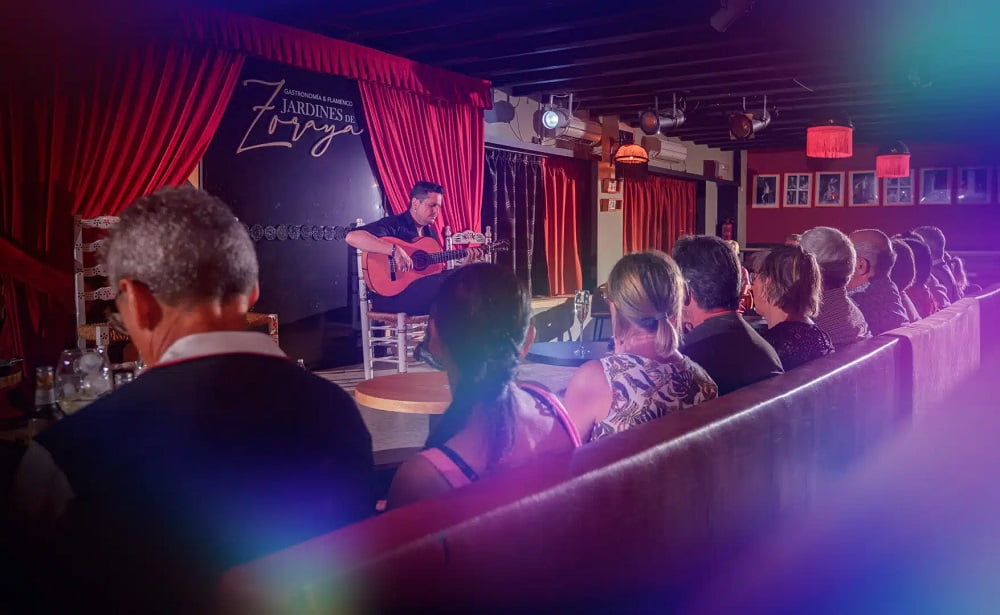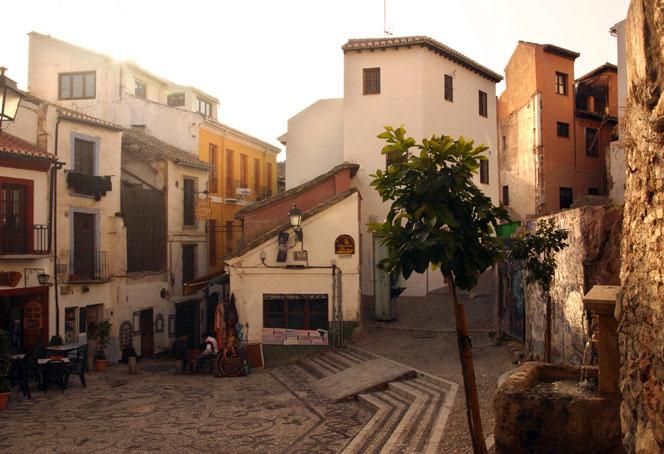It is the city of the Arab and the Christian, of flamenco with gypsy roots and the enigmatic zambra. There is a lot to see and enjoy, but on any flamenco route in Granada, this is a must.

To begin with, and except for those reasons that prevent a bit of sightseeing, you cannot leave the Andalusian city without visiting the Alhambra. And this monument is the first must-see on your flamenco route in Granada.
The Alhambra was declared a World Heritage Site in 1984. It is one of the most beautiful spaces in Andalusia, with a characteristic reddish colour due to the fact that its walls were built with the clay of the land. If you are in a hurry, it will take you a couple of hours to visit it, at least. Bear in mind that the Alhambra is a small city, with the Generalife Gardens, the Nasrid Palaces and the Alcazaba, if we are talking about the part built by the Arabs; the palace of Charles V and the church of Santa Maria, in the case of the Christian contributions.
Its construction began in the s. IX, the residences of powerful sultans passed through it and it has witnessed events related to the history of flamenco. The most relevant is the Concurso de Cante Jondo of 1922, held in the Plaza de los Aljibes.

As Lorca was involved in that 1922 event, and as the poet is also a son of Granada, every summer for more than 20 years “Lorca and Granada” has been held in the gardens of the Generalife. And this is one of the most eagerly awaited events of the summer that you can’t fail to note down in your diary if it coincides with your visit to the city. In 2023, it will be held from 2 to 26 August, and the theme is “Picasso and dance”, a flamenco show about which you can find more information here.
Let’s continue with the flamenco route in Granada and its surroundings
Because while you’re in the Alhambra, you should also take the opportunity to take a stroll through the surrounding Flamenco neighbourhoods. Without a doubt, the Albaycín. This area of Granada is also a World Heritage Site (since 1994), and walking through its narrow streets with minarets, hammams, cisterns… is a delight. And as it is a tourist neighbourhood, there is no shortage of tablaos to see live flamenco and, while you’re at it, have dinner or a drink.
One suggestion might be Jardines de Zoraya. Its gastronomic menus are based on local products, such as Iberian sausages, or Andalusian preparations, such as gazpacho. The artists performing are of a high standard, so you won’t be disappointed.

And the fact that the Albaycín is touristy does not mean that it is an ” artificial ” flamenco quarter. Artists of the stature of the Morente family and the Heredia family met in taverns such as Jaime el Parrón.
Of course, without forgetting that this is where the first flamenco club in history is located, La Platería (although it disputes this first position with another one, that of Juan Breva), where great figures and promising flamenco artists are programmed every week. It is open to everyone, so there is no excuse to visit its decades of flamenco.

Albaycín
Don’t forget Sacromonte
You can continue to the Sacromonte neighborhood, another essential visit in your search for flamenco in Granada.
It is where the flamenco palo called zambra was born, a very particular style among the palos, with the curiosity that it must (if you want to follow the tradition) be danced and played in the old gypsy houses dug into the mountains. In this article, we have told you a lot of things about the zambra, but here, as far as we are concerned, you should know that seeing a show of this kind will not leave you indifferent.
